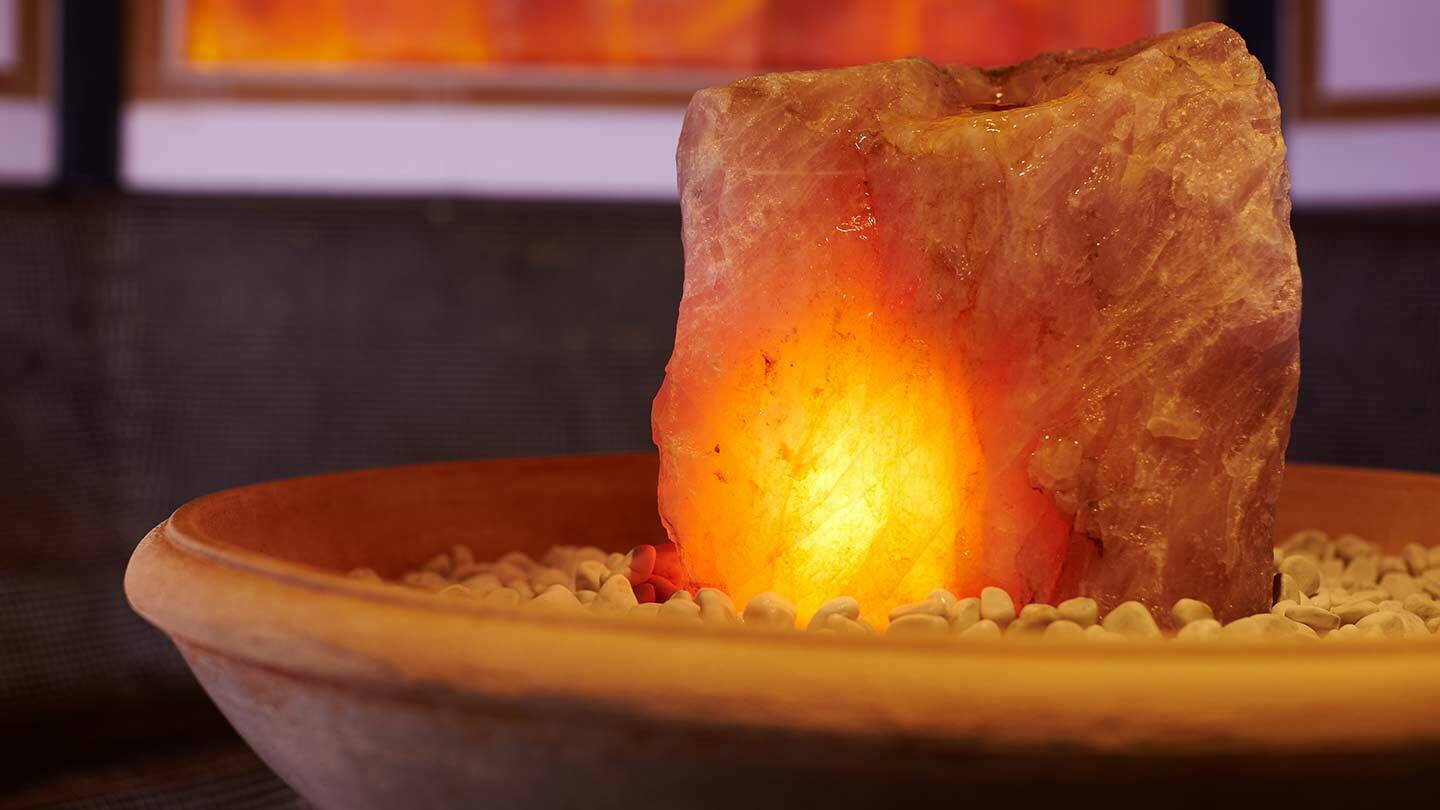Also known as halotherapy ("halo" is the Greek word for salt), salt therapy involves simply breathing in salty air. You can experience this natural treatment in a spa in a salt-steam room or salt cave, where the steam is infused with salt, and sometimes essential oils.
Salt has many benefits, according to both modern and ancient history. The Greeks and Romans bathed in warm salt-water for relaxation, rejuvenation and also to heal a variety of skin conditions. Hippocrates also recommended inhaling steam from salt water if you suffered from respiratory diseases.
In 1843, Dr F. Bochkowsky, a Polish physician, was the first to officially recognise salt therapy. He discovered that salt miners rarely suffered from respiratory diseases, thus linking the inhalation of salty air with health benefits. Dr Bochkowsky called this speleotherapy, from the Greek word "speleo", meaning cave. Salt therapy has been popular in Eastern Europe ever since, with the treatment being used for allergies, asthma, sinus issues, eczema, bronchitis, respiratory tract infections, hay fever, cystic fibrosis, and many other respiratory and skin conditions - even the common cold.
Some people who suffer from issues with their respiratory system and skin diseases say that halotherapy gives great results and offers a drug-free chance to feel better. Non-sufferers may find that salt inhalation helps with sleep.
You can experience a few small side-effects from inhaling salty air, too. Coughing is a good sign, it shows that the salt is loosening mucus deep in your lungs. Your skin might react a little, and you could have a rash or break out, but this should disappear fairly quickly.

Salt therapy in the UK will generally mean visiting an artificial salt cave or using a salt-steam room.
A salt-steam room room may be a single facility in a small spa, or part of a thermal suite in a larger spa. A salt room will be heated to a much milder temperature than a sauna, so you won't need to rush out to cool yourself down after a few minutes. Try to relax and take time to inhale the therapeutic steam.
Aqua Sana Spas in Cumbria, Nottinghamshire, Suffolk and Wiltshire all have a Japanese salt-steam bath (which is a traditional salt-steam room) in their extensive thermal suites. The Coniston Spa has a Himalayan Salt Sauna, if dry heat is more your thing, while Champneys Tring has a salt inhalation room.
Bathing in a salt-water pool is gentler on your skin than bathing in a chlorine-regulated pool, and salt water doesn't sting your eyes. Salt softens hard water, so even if you are in a hard-water area, the water will feel soft.
You can try swimming in salt-water pools at Eden Hall Day Spa in Nottinghamshire and St Brides Spa Hotel in Pembrokeshire. You can also float in a floatation pod filled with water and Epsom Salts at Ockenden Manor Spa.
In a salt cave, there will be salt on the floor and walls - but this is just for decoration. The salty air is pumped into the room by a dry saline diffuser, which keeps the room at a constant temperature and humidity. The salt particles are tiny, but small enough to penetrate deep into your lungs.
Speleotherapy, or salt-cave therapy, is a pleasant experience. You put a hair net over your hair, shoe guards over your feet, and then lie for an hour on a lounger, breathing the air, whilst sleeping or reading a magazine. You don't need to change into a robe, and the air doesn't affect your clothing or hair at all.
You can try the salt-cave experience at dedicated centres such as The Salt Cave locations in London, Tunbridge Wells, Edinburgh, Milton Keynes and Bexleyheath.
If you're trying a salt water pool or steam room, rinse your swimming costume thoroughly afterwards, as salt water can make your swimsuit fade.
This article was updated in November 2018

Stylish Spy
16th May 2013
Spy Likes:
Minimalist lines; organic products; facial massage; tranquillity; interesting people-watching.
Spy Dislikes:
Discarded towels on loungers; steam rooms that aren't steamy; mobile phones.
